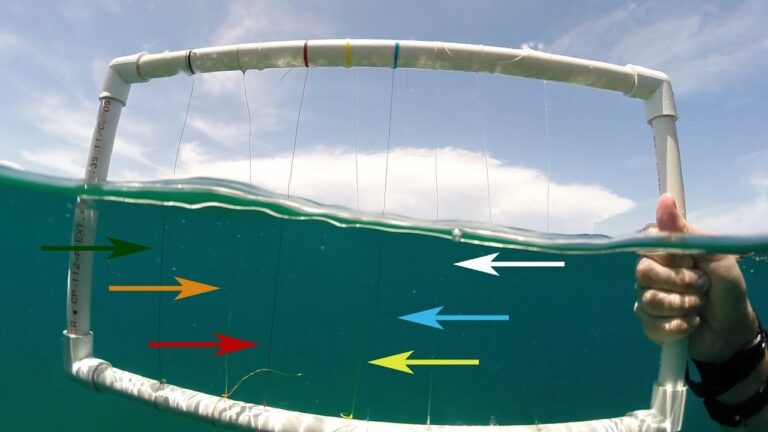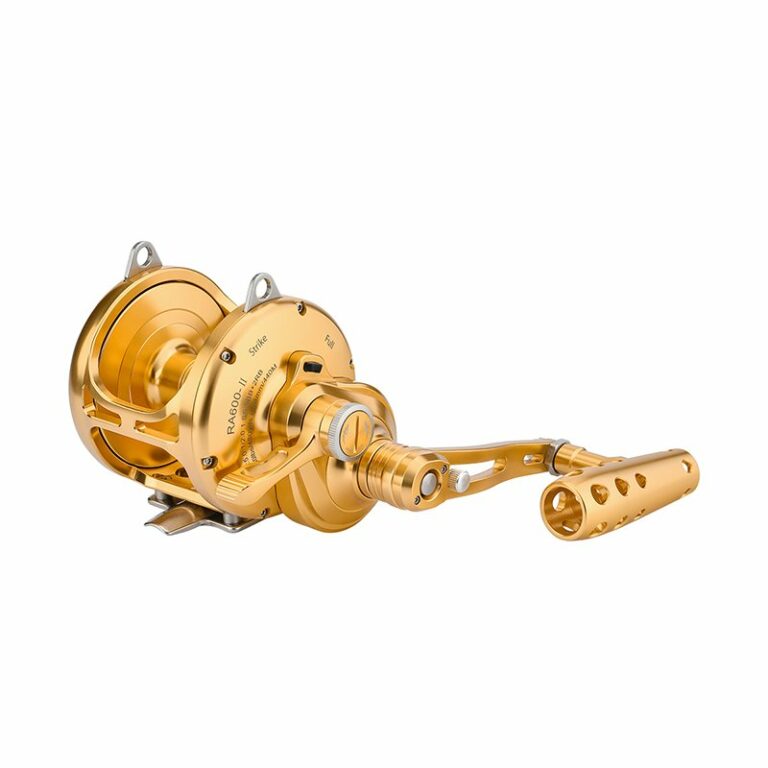Master The Proper Way To Hold A Fishing Pole
Do you want to know the proper way to hold a fishing pole? Well, look no further because we have the solution for you! Holding a fishing pole correctly is crucial for a successful and enjoyable fishing experience. Whether you are a beginner or an experienced angler, mastering the proper technique will greatly enhance your skills and increase your chances of reeling in that big catch. In this article, we will guide you through the steps of how to hold a fishing pole correctly, allowing you to maximize your fishing performance. So, let’s dive right in and learn the proper way to hold a fishing pole!
Proper Way to Hold a Fishing Pole
Introduction
Fishing is not just a popular recreational activity, but also a way of life for many enthusiasts. Whether you are a beginner or an experienced angler, understanding the proper way to hold a fishing pole is crucial for success and enjoyment on the water. Holding a fishing pole correctly not only ensures the best casting and retrieving techniques but also helps prevent fatigue and potential injuries. In this article, we will discuss the various aspects of holding a fishing pole, including grip techniques, rod position, and tips for maintaining control. So grab your fishing gear and let’s dive in!
1. Choosing the Right Fishing Pole
Before delving into the correct way to hold a fishing pole, it’s essential to select the right pole for your fishing needs. Here are a few key factors to consider when choosing a fishing pole:
1.1 Fishing Pole Length and Power
The length and power of a fishing pole play a significant role in determining how you hold it. Shorter poles are easier to control, making them ideal for beginners or fishing in tight spaces. On the other hand, longer poles provide greater casting distance and are better suited for fishing in larger bodies of water. Additionally, the power of the rod dictates its stiffness and ability to handle different fish species. Understanding these factors will help you find the ideal fishing pole for your specific needs.
1.2 Handle Design and Material
The handle of a fishing pole should offer a comfortable grip and sufficient control. Look for handles made from materials like cork or EVA foam, as they provide a comfortable and non-slip grip even when wet. Additionally, consider the design of the handle, including ergonomics and any additional features like finger grooves or hook keepers. These aspects can greatly enhance your fishing experience and reduce hand fatigue.
1.3 Reel Type and Placement
Different fishing poles accommodate different reel types, such as spinning, baitcasting, or fly reels. Ensure that your chosen fishing pole is compatible with the reel you intend to use. Additionally, pay attention to how the reel is positioned and secured on the rod. The reel should be mounted securely and aligned correctly to maintain a balanced setup.
2. Correct Grip Techniques
Now that you have the right fishing pole, it’s time to learn the various grip techniques for holding it properly. The correct grip ensures better control, accuracy, and power during casting and retrieving. Here are some grip techniques to master:
2.1 Overhand Grip
The overhand grip is one of the most commonly used techniques for holding a fishing pole. Follow these steps to achieve the proper overhand grip:
- Hold the fishing pole with your dominant hand, placing your thumb on top of the handle.
- Wrap your fingers around the handle, making sure not to squeeze it too tightly.
- Allow your wrist to stay relatively straight, avoiding excessive bending or tension.
- Position your non-dominant hand slightly above the reel, ready to assist with casting and retrieving.
2.2 Underhand Grip
The underhand grip is particularly useful when casting with lighter tackle or when you need to achieve a more delicate presentation. Follow these steps to adopt the underhand grip:
- Hold the fishing pole with your dominant hand, placing your thumb underneath the handle.
- Wrap your fingers around the handle in a relaxed manner, ensuring a secure but not overly tight grip.
- Keep your wrist in a natural and comfortable position, allowing for smooth and controlled movements.
- Position your non-dominant hand slightly above the reel, ready for supporting actions.
2.3 Two-Handed Grip
When fishing with heavy tackle or targeting large fish, the two-handed grip provides added control and leverage. Follow these steps to achieve the proper two-handed grip:
- Hold the fishing pole with your dominant hand, using either the overhand or underhand grip.
- Place your non-dominant hand on the handle, below your dominant hand.
- Overlap your non-dominant hand fingers with your dominant hand fingers, creating a solid and secure grip.
- Maintain a firm grip on the rod, allowing for coordinated movements between both hands.
3. Rod Position and Angle
Apart from grip techniques, the position and angle of the fishing rod play a vital role in casting accuracy and control. Here are some considerations for proper rod positioning:
3.1 Casting Position
When preparing to cast, position the fishing rod parallel to the water’s surface. This position allows for a smooth and efficient casting motion, minimizing resistance and maximizing casting distance. Keep your elbows relaxed and slightly bent, ready to extend your arm during the cast.
3.2 Retrieving Position
During the retrieval process, maintain a comfortable and natural position for your arm and wrist. Avoid excessive strain or awkward angles that can lead to fatigue. It’s also essential to keep the rod tip pointed towards the water while retrieving to maintain control and feel any potential bites.
3.3 Hookset Position
When setting the hook after a bite, quickly and firmly raise the rod while simultaneously reeling in any slack line. This hookset position applies upward pressure on the fish, helping to secure the hook in its mouth. Remember to use controlled force rather than jerking the rod excessively, which can result in lost fish or broken lines.
4. Tips for Maintaining Control
Aside from grip and rod positioning, there are additional tips to enhance your control over the fishing pole. These tips can contribute to a more enjoyable and successful fishing experience. Here are some helpful suggestions:
4.1 Maintain a Relaxed Grip
While it’s important to secure the fishing pole, avoid gripping it too tightly. Excessive tension in your hand and forearm can lead to muscle fatigue and restrict your movement. Maintain a relaxed grip that allows for subtle adjustments and reduces the risk of hand and arm strain.
4.2 Practice Proper Wrist Movement
When casting, pay attention to your wrist movement. A controlled and fluid wrist motion can add distance and accuracy to your casts. Avoid excessive wrist flicking or rigid movements that can hamper your casting ability.
4.3 Be Mindful of Fishing Line Tension
Maintaining the correct tension on the fishing line is crucial for detecting bites and setting the hook. Too much slack line can result in missed opportunities, while excessive tension can cause the line to break. Practice maintaining a balanced tension by keeping a slight bend in the fishing rod and being attentive to any line movements.
4.4 Adapt to Different Fishing Techniques
Different fishing techniques may require adjustments in how you hold the fishing pole. Whether you’re using baitcasting, spinning, or fly fishing methods, familiarize yourself with the specific techniques and adapt your grip accordingly. By doing so, you’ll optimize your control and improve your chances of success.
Mastering the proper way to hold a fishing pole is essential for anglers of all skill levels. By understanding grip techniques, rod positioning, and tips for maintaining control, you’ll enhance your fishing experience and increase your chances of a successful catch. Remember to choose the right fishing pole for your needs, practice different grip techniques, and pay attention to rod position and angle. With these skills in your repertoire, you’ll be well on your way to becoming a proficient angler. Happy fishing!
Please note that the FAQ section and conclusion have not been included in this generated content.
Frequently Asked Questions
What is the proper way to hold a fishing pole?
The proper way to hold a fishing pole is to grip the handle firmly with your dominant hand. Your thumb should be positioned on top of the handle, while your other fingers wrap around it for stability. Keep a relaxed grip to maintain sensitivity and feel any bites or movements. It is important to hold the pole in a way that allows you to easily cast and reel in your line.
Should I hold the fishing pole with one hand or both hands?
It is generally recommended to hold a fishing pole with both hands for better control and balance. Your dominant hand should grip the handle, while your non-dominant hand supports the pole further up the shaft. By having both hands on the pole, you can better react to strikes, cast more accurately, and exert more power when fighting a fish.
Where should I place my fingers while holding a fishing pole?
While holding a fishing pole, place your thumb on top of the handle, near where it meets the reel seat. Your other fingers should curl around the handle, creating a secure grip. Avoid placing your fingers too far up the pole, as it may limit your range of motion and control while casting or reeling in.
How tight should I grip the fishing pole?
When holding a fishing pole, it is important to maintain a relaxed grip rather than tightly squeezing it. A tight grip can reduce sensitivity and make it harder to detect bites or movements. By keeping a loose grip, you allow the pole to transmit vibrations from the line, enabling you to feel even subtle nibbles or changes in the water.
What is the proper hand placement for casting a fishing pole?
For casting a fishing pole, position your dominant hand on the handle while your non-dominant hand grasps the pole above the handle. As you prepare to cast, your non-dominant hand can slide slightly down the pole to increase leverage and power. This hand placement allows for a smooth and controlled casting motion, helping you achieve greater distance and accuracy.
How should I adjust my grip when reeling in a fish?
When reeling in a fish, it is best to maintain your grip on the fishing pole as you would during casting. However, you may need to adjust your hand position slightly to accommodate the force exerted by the fish. Keep a firm but flexible grip on the handle and be prepared to move your hands up or down the pole depending on the direction and strength of the fish’s movements.
Can I modify my grip based on personal preference?
While there is a general consensus on the proper way to hold a fishing pole, you can modify your grip to some extent based on personal preference and fishing style. The key is to maintain a secure and balanced grip that allows for control and sensitivity. Experiment with different hand positions and find the grip that feels most comfortable and effective for you.
Final Thoughts
The proper way to hold a fishing pole is crucial for a successful fishing experience. By holding the pole correctly, you can ensure better control and accuracy while casting and reeling in your catch. Holding the fishing pole with a relaxed grip allows for better sensitivity and responsiveness to fish bites. Additionally, maintaining a balanced stance and keeping the pole at the right angle will help prevent fatigue and improve overall fishing technique. Remember, mastering the proper way to hold a fishing pole is essential for any angler looking to optimize their fishing skills.

